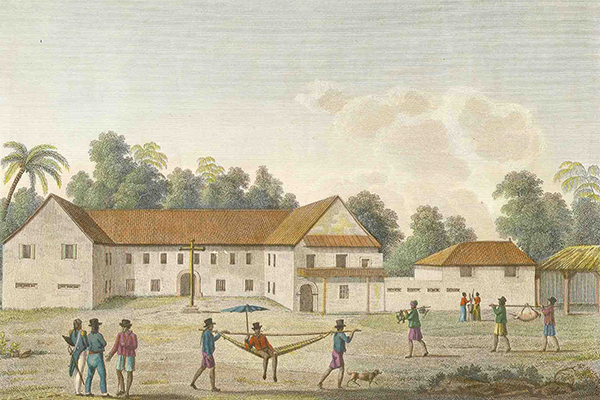Influential Governors in Education

Established Western education system
Throughout the 230 duration of the Spanish administration of the Mariana Islands (1668-1898), more than fifty governors were appointed to serve at the pleasure of the Spanish crown. The appointed governors served terms ranging from three months to ten years.
The civil and military governor (gobernador politico military) oversaw all aspects of island operations. He also served on the Council for Public Education (Junta de Enseñanza Pública) and assumed the role of Supervisor of the Rector of the Colegio de San Juan de Letrán, which was a school and seminary established for boys and he was also a deputy to the Spanish Crown (superior government) and lieutenant captain general of the Philippines, which allotted the funds for “missionary work” and oversaw operations in the Marianas.
Three governors, in particular, helped to establish a more stable educational institution in the Mariana Islands.
Phelipe de Ceraín
The Spaniard Phelipe de Ceraín was royally granted the proprietary governorship (en propiedad el gobierno) of the Marianas in 1776, a position he served for ten years. In 1779, during Governor Ceraín’s administration, a new building for the Colegio de San Juan de Letrán was constructed. The school building had been badly damaged during an earthquake that same year. The new structure of stone masonry (mampostería) would become the third building to house the boys’ school and seminary.
José Arlegui y Leóz
Following Governor Ceraín’s term, José Arlegui y Leóz was the next royally appointed Governor. Arlegui, who was commander of the Esquadrón de Dragones de Luzón—a military unit of foot soldiers and horsemen – held the office of governor of the Mariana Islands from 1786 to 1794. Under his leadership, in 1789, the administration of the funding for the Colegio de San Juan de Letrán changed, thereby allowing the governor more direct access to the money designated for the schools on the island.
Prior to 1789, the funding for the school was administered via the High Court (Real Audencia) in Manila. Although the funds continued to be deposited and monitored by a designee in Manila, it was now placed under the direct authority of the Governor and the Captain General of the Philippines. When the Jesuits established their mission in the Marianas, the prime source of funding for evangelization came from the galleons that stopped by on their way through the trade route. When funding changed to come through Manila it was handled by the administration of the Augustinian Recollects.
Emilio Galisteo y Brunenque
The third Governor to be noted with regard to the educational system in the Mariana Islands is Emilio Galisteo y Brunenque. Appointed in 1893, Brunenque served just over two years as the civil and military leader of the islands. In 1896, the Governor Galisteo ordered the construction of a new Colegio de San Juan de Letrán building. The site of the school was relocated to central Agaña, just northwest of the Plaza de España. Unfortunately, the first set of stone masonry walls erected for the building fell due to poor construction methods.
Although construction continued, the new Colegio building was never completed under the Spanish administration. When the United States gained control of the Marianas in 1898, the Americans completed the school building and renamed the school the Richard P. Leary School, after the first American naval governor.
Although the missionaries played key roles in the development of education in the Marianas, the governors provided significant administrative support for the system as a whole.
For further reading
Driver, Marjorie G. The Spanish Governor of the Mariana Islands and the Saga of the Palacio. Mangilao: Micronesian Area Research Center, University of Guam, 2005.